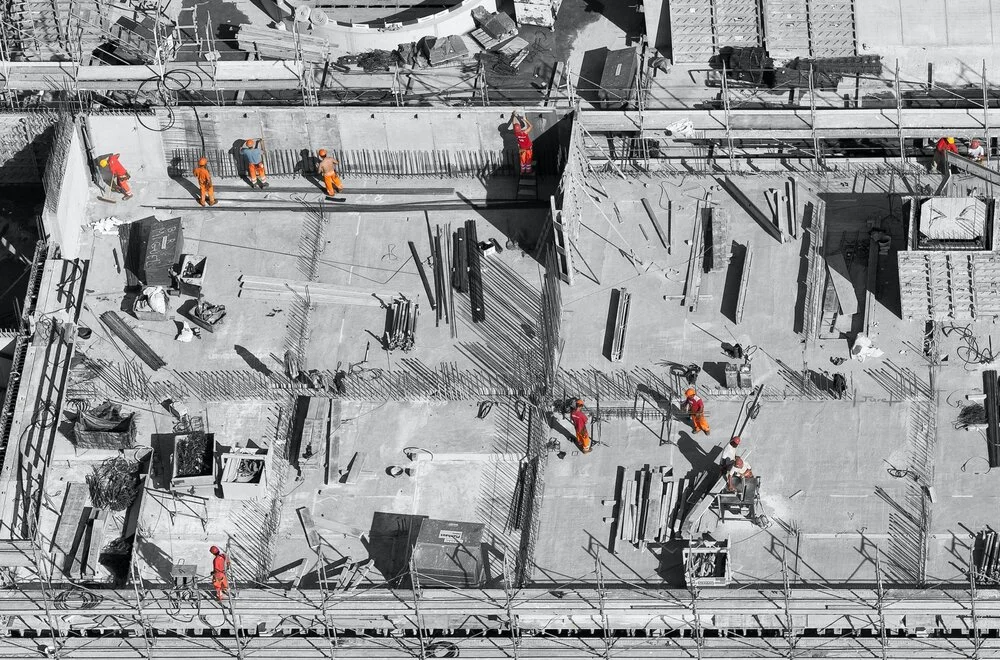Quantity takeoff is a crucial process in construction cost estimation, which involves calculating the materials required for a project. This process helps project managers and contractors determine the construction cost accurately and efficiently.
To simplify construction cost estimation, quantity takeoff is essential because it provides a detailed list of materials and their respective quantities. This process helps create an itemized bill of materials, enabling project managers to determine the cost of construction with greater accuracy.
Using quantity takeoff in construction cost estimation also ensures the project stays within budget. By accurately determining the required materials and their respective quantities, contractors can avoid over-ordering materials, resulting in unnecessary costs. Additionally, quantity takeoff enables project managers to identify areas where they can reduce costs by selecting more cost-effective materials.

Another advantage of using quantity takeoff in construction cost estimation is simplifying the bidding process. With an itemized bill of materials, contractors can quickly provide accurate and competitive bids for the project.
Challenges and Best Practices for Accurate Quantity Takeoff
We will examine some of the challenges met in accurate quantity takeoff and the best practices that can be employed to overcome them.
Challenges
One of the significant challenges in quantity takeoff is the need for standardized measurements. Different suppliers may measure the same material or component differently, which can lead to discrepancies in the final quantity estimation.
To overcome this challenge, it is essential to use standardized measurement units and confirm that all stakeholders concerned in the project are conscious of them.
Another challenge is the complexity of the project design, which can make it difficult to estimate quantities accurately.
For instance, a curved or irregularly shaped surface may require additional materials to ensure proper coverage. It is essential to break down the project into smaller components to address this challenge and estimate the quantities needed for each element separately.
Inaccurate project documentation can also pose a challenge in quantity takeoff. If the project documents are complete, updated, and accurate, it can lead to correct quantity estimations.
To overcome this challenge, it is vital to ensure that the project documents are up-to-date and accurate. In addition, it is essential to communicate with the project team to clarify any ambiguities and assure that everyone is on the identical porter.
Best Practices
Now let’s discuss some best practices that can be employed to ensure accurate quantity takeoff. Firstly, it is essential to use reliable and accurate software tools to perform the quantity takeoff. The use of technology can reduce errors and improve efficiency, leading to more precise quantity estimations.
Secondly, involving all stakeholders in the quantity takeoff process is essential. This includes the project team, suppliers, and contractors. This collaboration can help ensure that all parties are aware of the project requirements and can provide input on the quantity estimations.
Finally, it is essential to review and validate the quantity takeoff results. This can be done by comparing the estimated quantities with historical data and industry standards or by conducting physical inspections. Any discrepancies should be investigated and resolved to ensure accurate final quantity estimation.
Exploring Different Types of Quantity Takeoff Methods
Different types of quantity takeoff methods are commonly used in the industry. Let’s explore some of these methods.
1) The first method is manual quantity takeoff, which involves manually measuring dimensions and quantities from drawings or blueprints. This method is time-consuming and prone to errors, but it can be helpful for small projects or when digital graphics are unavailable.
2) The second method is the spreadsheet method, where estimators use specialized software to create spreadsheets that calculate the materials needed for a project. This method can be more efficient than manual quantity takeoff, but it still requires a high level of manual input, which can result in errors.
3) The third method is the digitizer method, which involves using a tablet to measure quantities directly from drawings or blueprints. This method is more accurate than manual quantity takeoff but requires specialized equipment and can be expensive.
4) The fourth method is the on-screen takeoff method, where estimators use specialized software to measure quantities directly from digital drawings. This process is quick and accurate but requires highly technical crafts and specialized software.
The fifth method is the 3D modeling method, which involves creating a virtual model of the project and calculating quantities directly from the model. This method is the most accurate and efficient but requires high technical skills and specialized software.
Conclusion
In conclusion, quantity takeoff is a critical process in the construction industry that accurately assesses the materials needed for a project. It plays a crucial part in ensuring the victory of a project, as it helps in budgeting, procurement, and scheduling. Quantity takeoff requires attention to detail, knowledge of construction materials and methods, and experience in the field.
The process has become more efficient and accurate with the help of modern technology and software. Effective quantity takeoff can help avoid costly errors, reduce waste, and improve project timelines. Therefore, it is essential to prioritize this process in any construction project to achieve successful outcomes.

